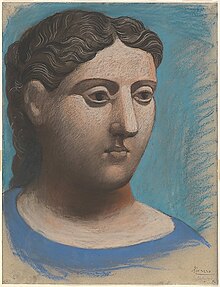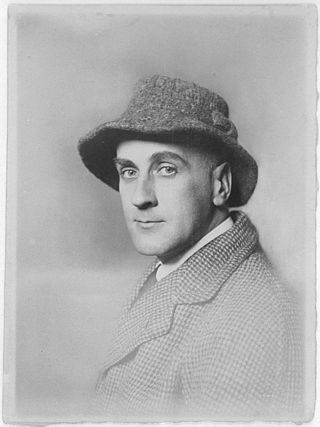Contents













Pablo Ruiz Picasso was a Spanish painter, sculptor, printmaker, ceramicist, and theatre designer who spent most of his adult life in France. One of the most influential artists of the 20th century, he is known for co-founding the Cubist movement, the invention of constructed sculpture, the co-invention of collage, and for the wide variety of styles that he helped develop and explore. Among his most famous works are the proto-Cubist Les Demoiselles d'Avignon (1907) and the anti-war painting Guernica (1937), a dramatic portrayal of the bombing of Guernica by German and Italian air forces during the Spanish Civil War.

André Derain was a French artist, painter, sculptor and co-founder of Fauvism with Henri Matisse.

The Rose Period comprises the works produced by Spanish painter Pablo Picasso between 1904 and 1906. It began when Picasso settled in Montmartre at the Bateau-Lavoir among bohemian poets and writers. Following his Blue Period – which depicted themes of poverty, loneliness, and despair in somber, blue tones – Picasso's Rose Period represents more pleasant themes of clowns, harlequins and carnival performers, depicted in cheerful vivid hues of red, orange, pink and earth tones.
The Blue Period comprises the works produced by Spanish painter Pablo Picasso between 1901 and 1904. During this time, Picasso painted essentially monochromatic paintings in shades of blue and blue-green, only occasionally warmed by other colors. These sombre works, inspired by Spain and painted in Barcelona and Paris, are now some of his most popular works, although he had difficulty selling them at the time.

Picasso's African Period, which lasted from 1906 to 1909, was the period when Pablo Picasso painted in a style which was strongly influenced by African sculpture, particularly traditional African masks and art of ancient Egypt, in addition to non-African influences including Iberian sculpture, and the art of Paul Cézanne and El Greco. This proto-Cubist period following Picasso's Blue Period and Rose Period has also been called the Negro Period, or Black Period. Picasso collected and drew inspiration from African art during this period, but also for many years after it.

The University of Michigan Museum of Art (UMMA) is one of the largest university art museums in the United States, located in Ann Arbor, Michigan with 94,000 sq ft (8,700 m2). Built as a war memorial in 1909 for the university's fallen alumni from the Civil War, Alumni Memorial Hall originally housed University of Michigan's Alumni office along with the university's growing art collection. Its first director was Jean Paul Slusser, who served from 1946 to his retirement in 1957.

Wilhelm Uhde was a German art collector, dealer, author, and critic, an early collector of modernist painting, and a significant figure in the career of Henri Rousseau.

Musée d'Art Moderne de Paris or MAM Paris, is a major municipal museum dedicated to modern and contemporary art of the 20th and 21st centuries, including monumental murals by Raoul Dufy, Gaston Suisse, and Henri Matisse. It is located at 11, Avenue du Président Wilson in the 16th arrondissement of Paris.

The Vollard Suite is a set of 100 etchings in the neoclassical style by the Spanish artist Pablo Picasso, produced from 1930 to 1937. Named after the art dealer who commissioned them, Ambroise Vollard (1866–1939), the suite is in a number of museums. More than 300 sets were created.

Les Peintres Cubistes, Méditations Esthétiques, is a book written by Guillaume Apollinaire between 1905 and 1912, published in 1913. This was the third major text on Cubism; following Du "Cubisme" by Albert Gleizes and Jean Metzinger (1912); and André Salmon, Histoire anecdotique du cubisme (1912).

Au Lapin Agile is a 1905 oil on canvas painting by Pablo Picasso. It depicts the interior of the Lapin Agile, a famous cabaret club in the Montmartre area of Paris. The composition was produced during Picasso's Rose Period and includes a self-portrait of the artist who frequented the club in his youth. The painting is listed as one of the most expensive paintings after achieving a price of $40.7 million at Sotheby's auction on 27 November 1989. It is housed in the collection of the Metropolitan Museum of Art in New York City.
Two Girls Reading is a 1934 painting by Pablo Picasso. Since 1994, it has been at the University of Michigan Museum of Art.